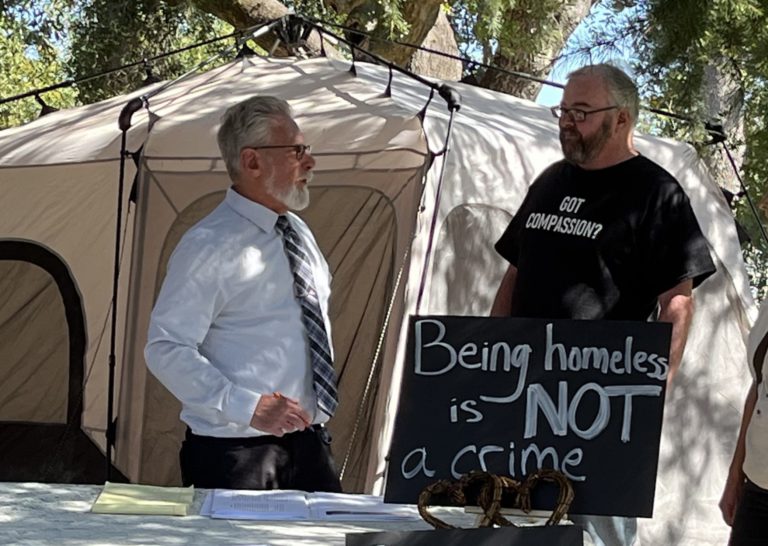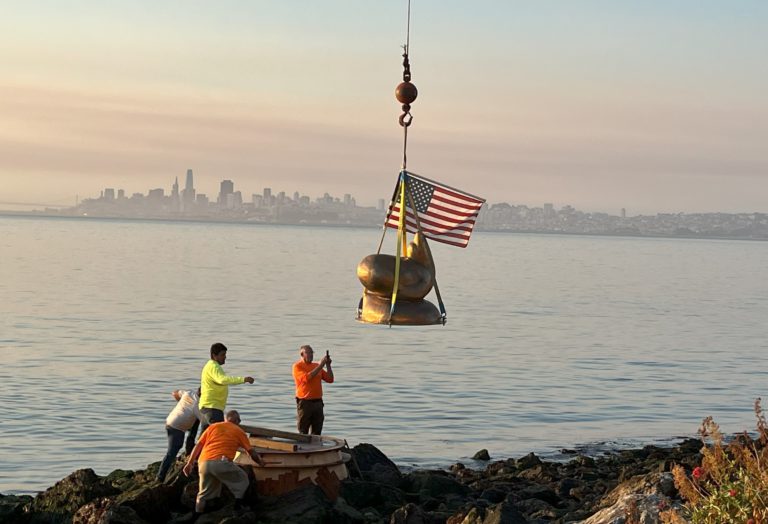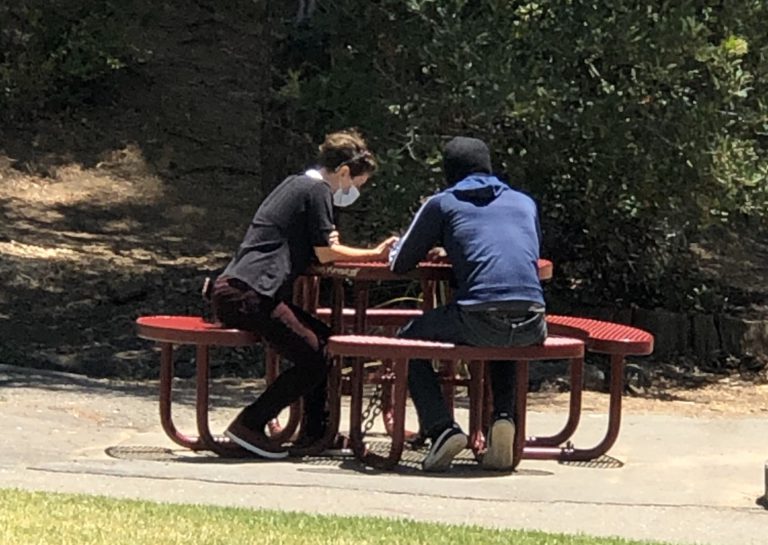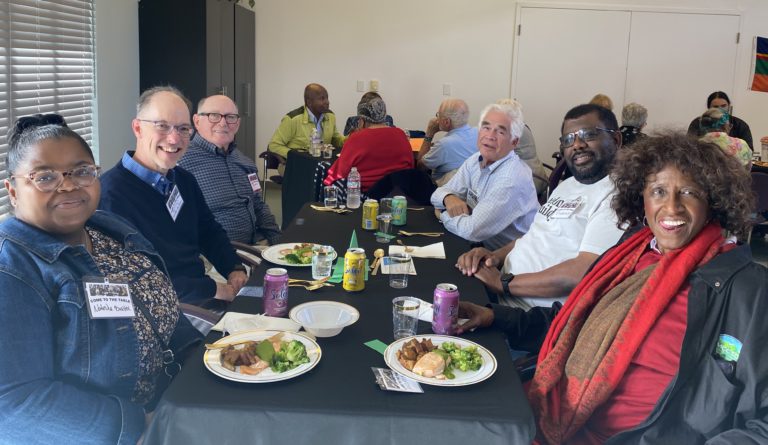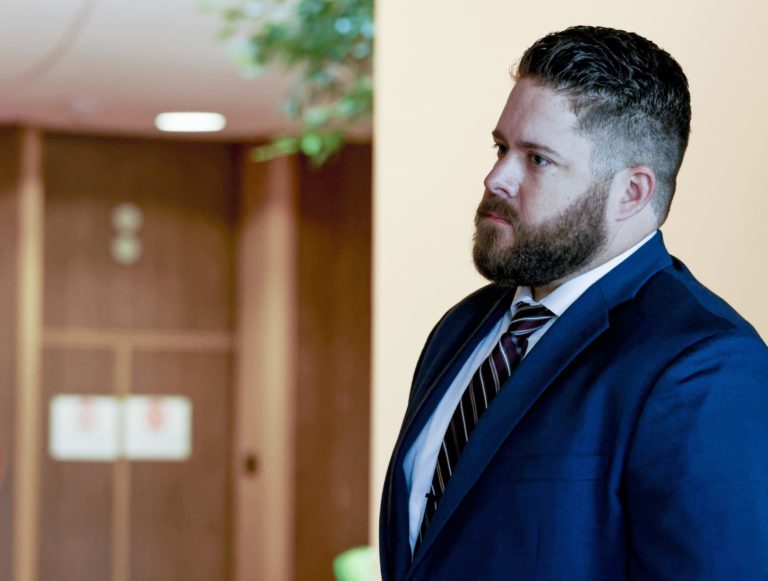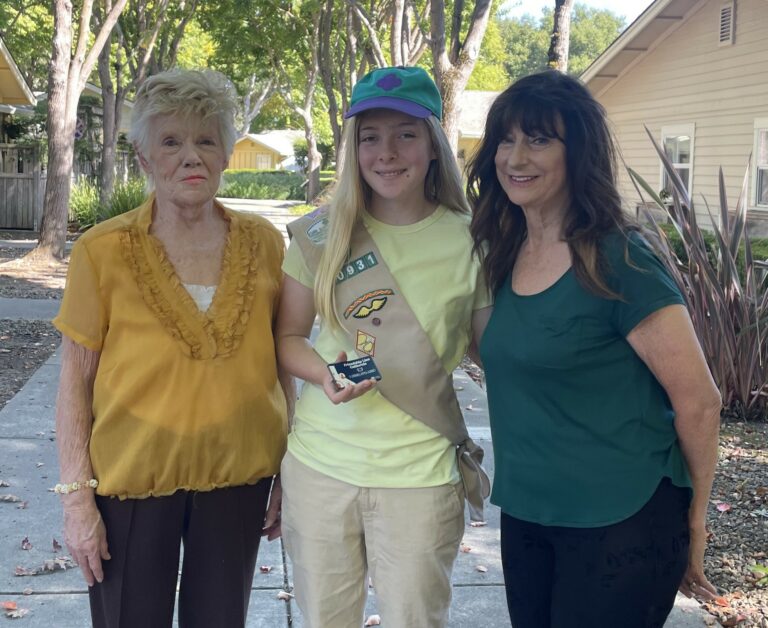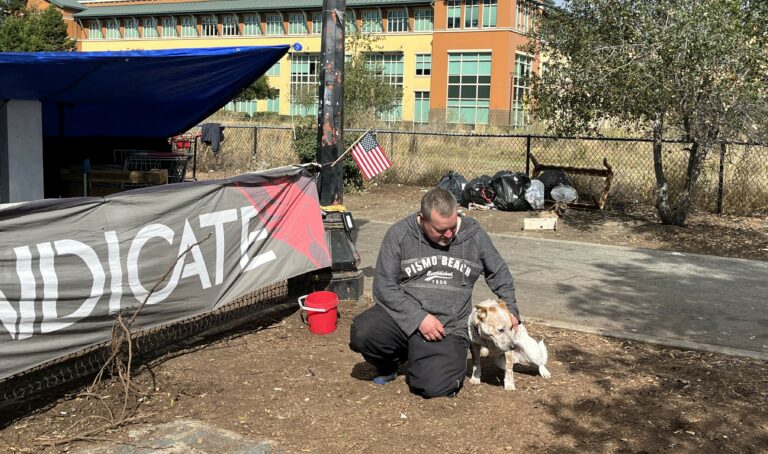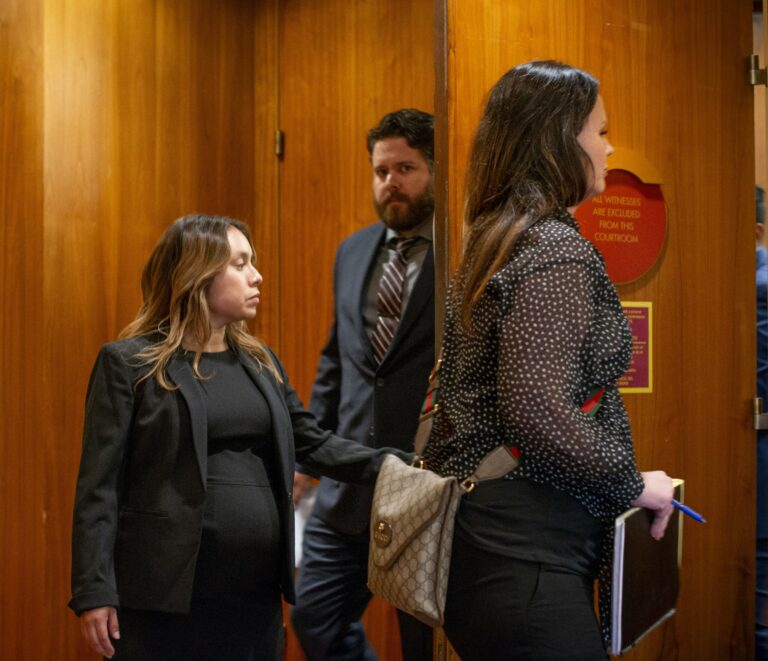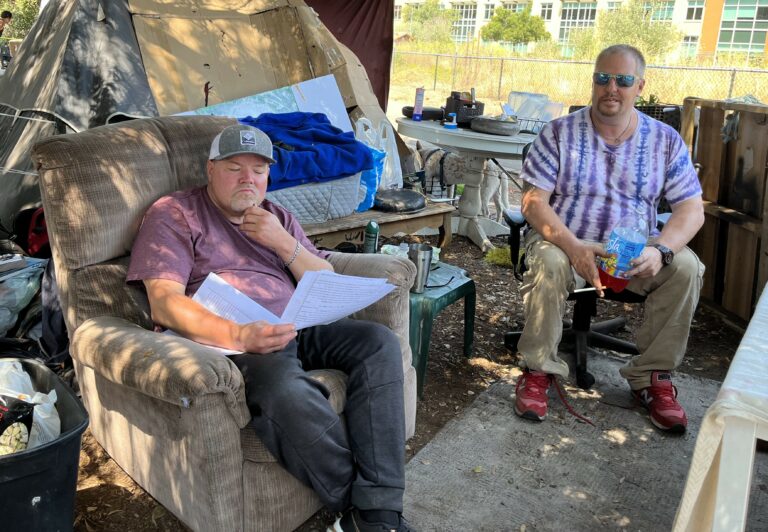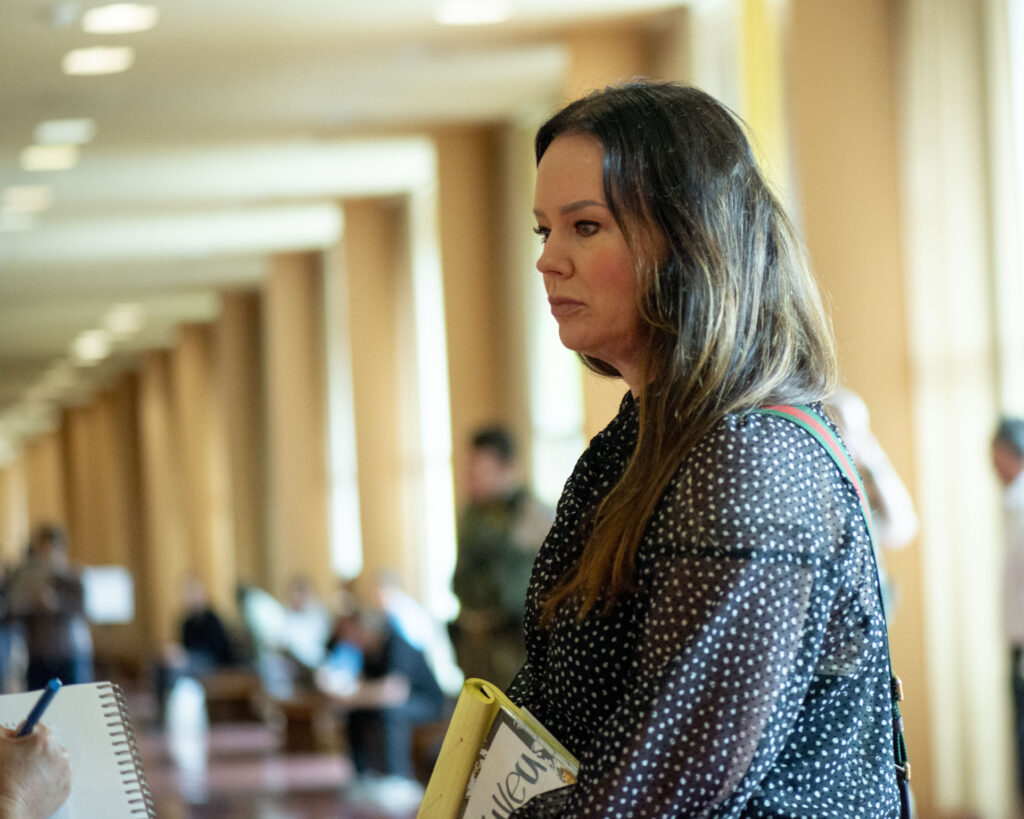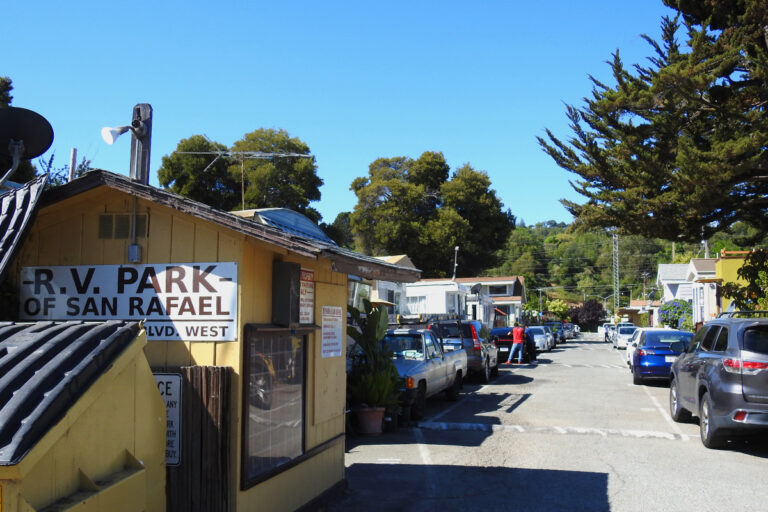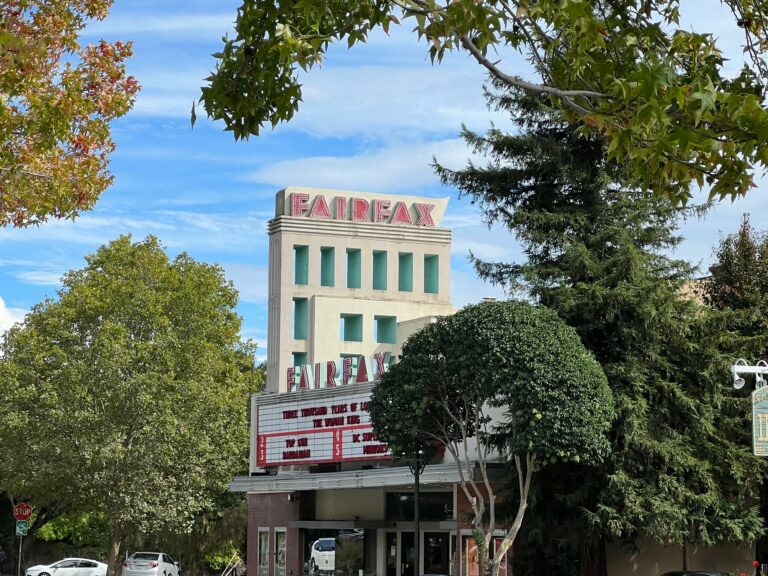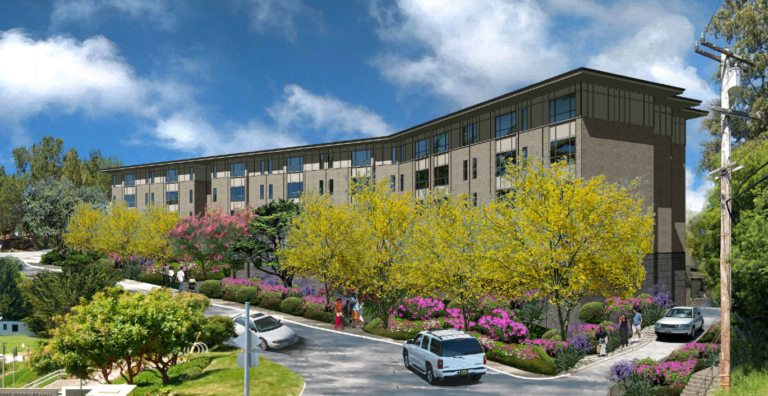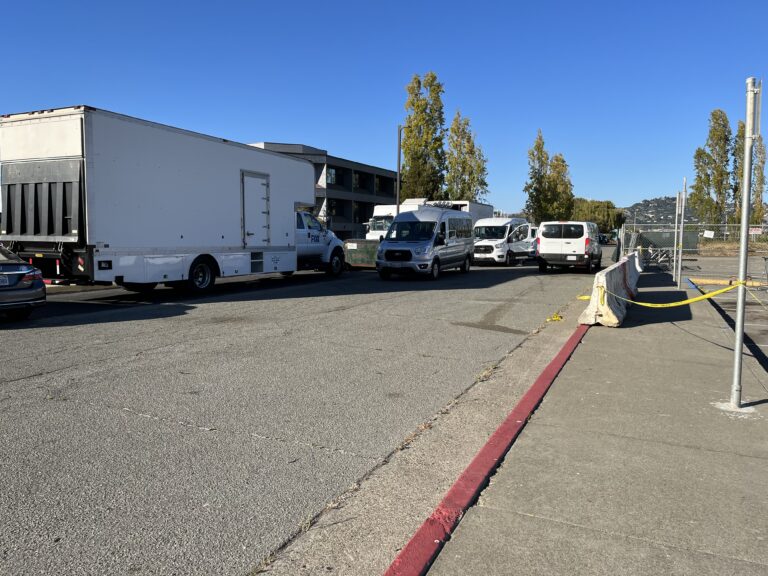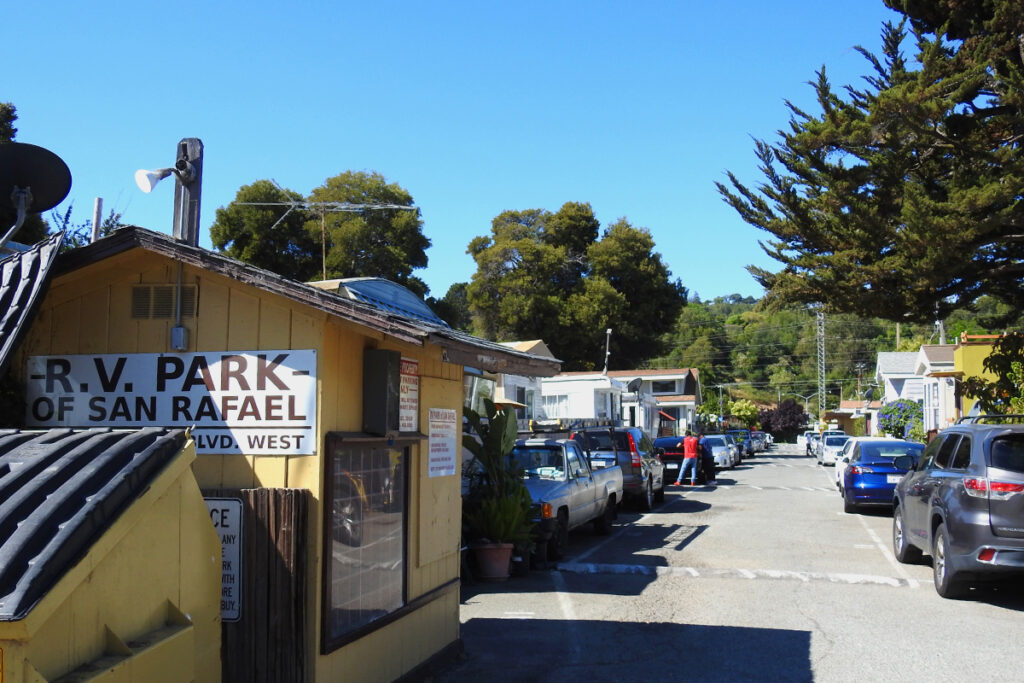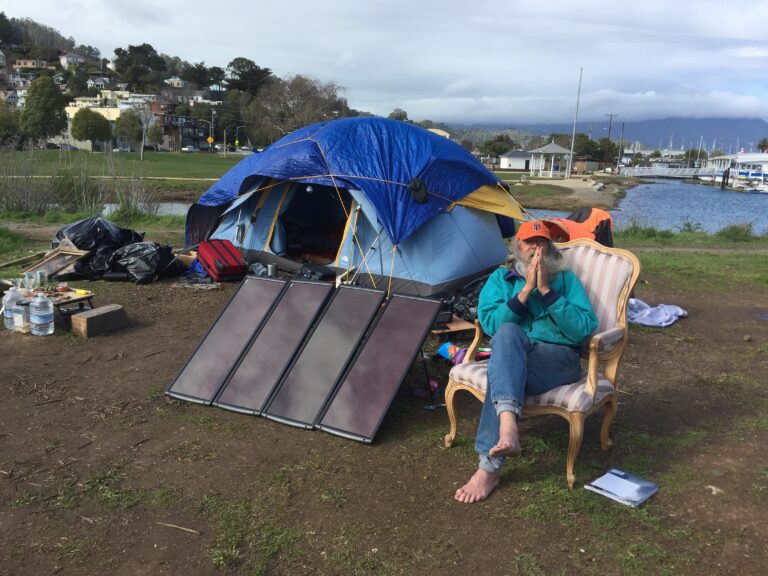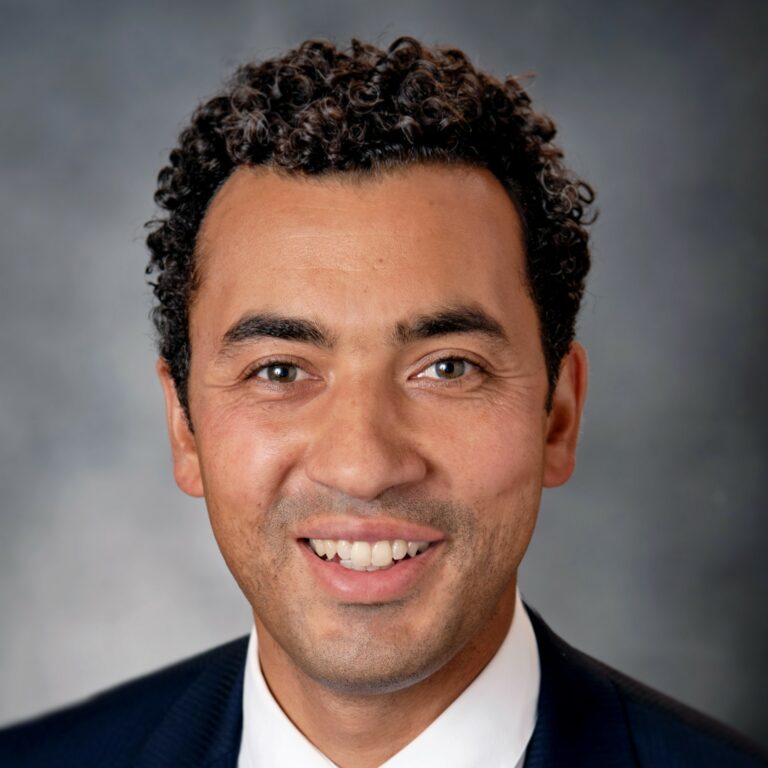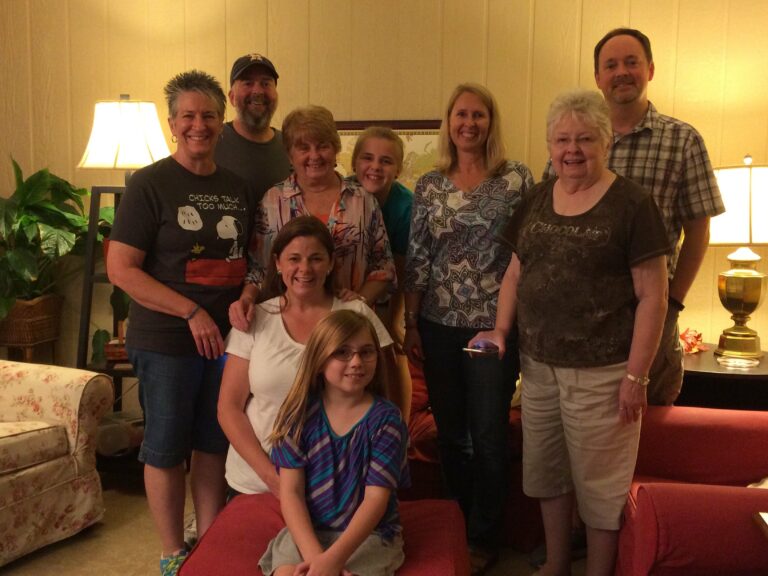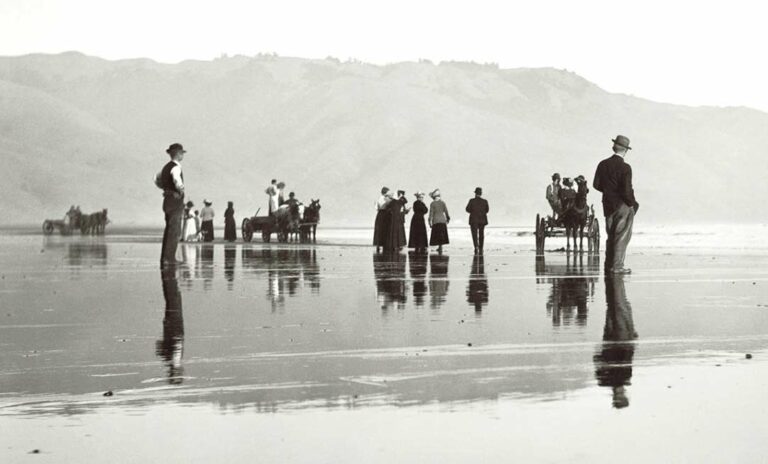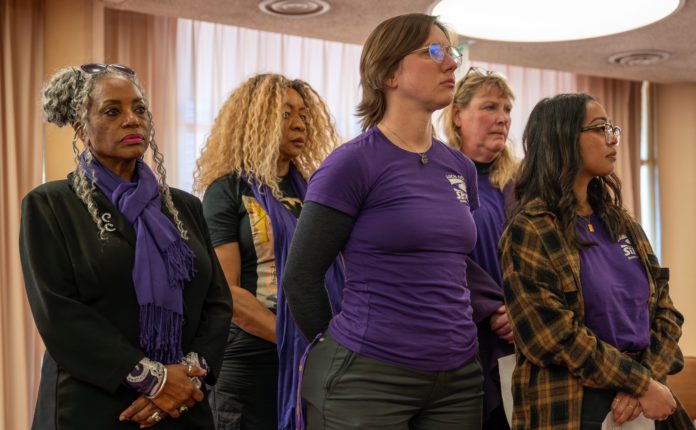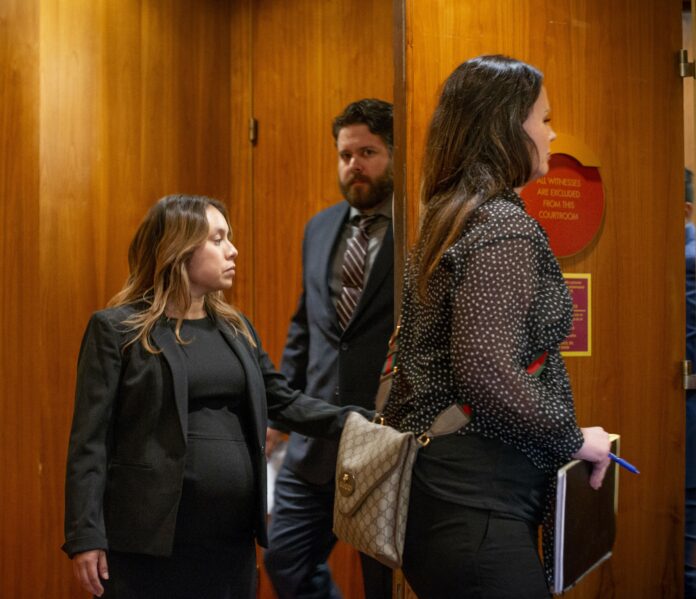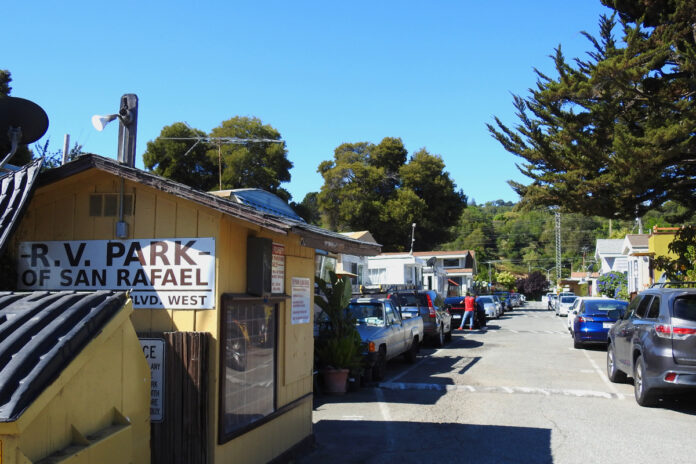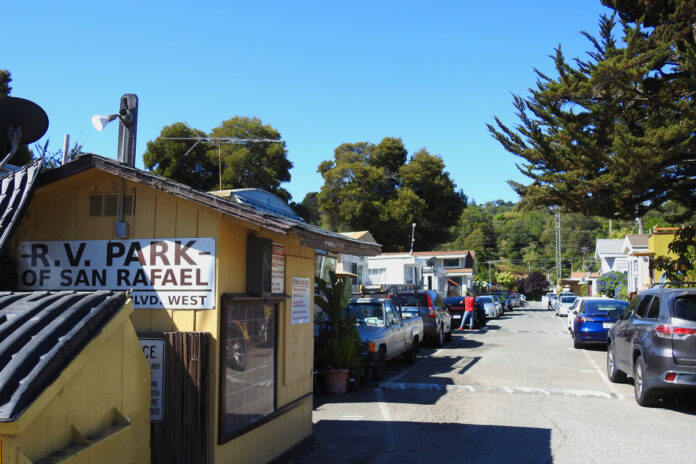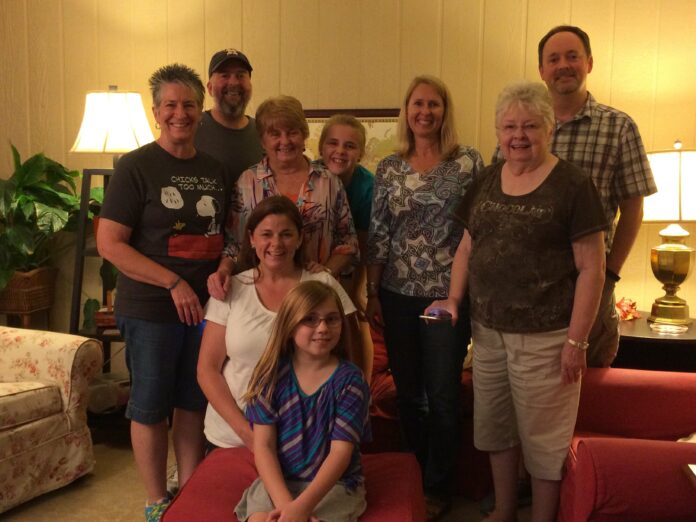The Novato City Council called a special meeting and passed an urgency ordinance last week. With the wild weather warnings in Marin lately, one might think it had to do with a tsunami, tornado or atmospheric river.
Good guesses based on the purpose of an urgency ordinance: California law states a city may enact such an ordinance for “the immediate preservation of the public peace, health or safety.” In other words, Novato had a critical situation and needed to act right away.
Or maybe not.
At the meeting, the council voted unanimously to ban camping and camping gear on public property, clearly targeting the homeless community. Many people fail to see the urgency, especially when Novato first unveiled the anti-camping ordinance in September, only to have the city attorney promptly remove it from the meeting agenda.
By asserting an urgent need, Novato bypassed the lengthier process required by state law to introduce, approve and enact an ordinance, which takes more than a month. An urgency ordinance moves through that entire process in 24 hours.
Novato resident and homeless advocate Robbie Powelson, troubled by what he deems as the abuse of the urgency ordinance, has filed a legal action against Novato for allegedly violating several state laws. He’s also seeking a temporary restraining order to halt the implementation of the urgency ordinance.
“If we don’t nullify it right now, the public is harmed because an illegal ordinance is on the books,” Powelson said in an interview.
What happened to spur the city’s swift prohibition on camping? Well, that’s an excellent question and one I posed to each of the five city council members. They remain mum on the subject, although state law requires that a city’s urgency ordinance contain a “declaration of the facts constituting the urgency.”
Novato declared that camping on public property “has created an immediate threat to public peace, health, and safety.” With such a strong statement, one might expect facts supported by data and evidence. The city did not deliver.
Rather, the city said camping creates unsanitary conditions. True. But providing trash cans and porta potties near homeless encampments goes a long way to remedy that issue.
Next up, camping brings the presence of unlawful activities, according to the city. News flash—crime happens everywhere, even inside homes. Perhaps the council members should check the Novato police log for a better idea of the goings-on in their lovely city. Those 60 sworn officers aren’t hanging out at homeless camps all day and night.
Finally, the city claims camping damages public property and natural resources. Again, Novato could get ahead of these problems by providing garbage bins and porta potties, as well as fire extinguishers and a security guard. As for the impact of camping on natural resources, the council is barking up the wrong tree. Homes and vehicles powered by fossil fuels cause far greater harm than homeless campers.
The simple solution to the listed problems is a city-sanctioned homeless camp with sanitation gear and security, just like the one that Novato established in Lee Gerner Park two years ago as part of a legal settlement with the Marin Homeless Union. For now, a federal judge’s order has thwarted the city’s plans to shut down the camp, at least until the court decides on a motion filed by the union.
Lucie Hollingsworth, a Novato resident and senior housing attorney for Legal Aid of Marin, says the city’s new ordinance creates more obstacles for homeless people trying to get housing. At least 25 former Lee Gerner Park campers received housing while living at the camp, in large part because they remained connected to case managers guiding them through the process.
“Novato is saying, ‘We have the right to push you along and throw you in jail and take all of your things because you’re poor and can’t afford a home,’” Hollingsworth said. “It is far cheaper to solve homelessness than to perpetuate it and make it worse. An ordinance like this will only inspire more litigation and more money being thrown at attorneys instead of at the problem itself. As a taxpayer, that frustrates me as well.”
The city is currently fending off two legal actions for its homelessness policies, with the Marin Homeless Union promising to fight the new city-wide camping ban. Like its other lawsuits against municipalities, the union will base its claims on the 14th Amendment’s state-created danger doctrine.
Meanwhile, the elephant in the room remains. Did the City of Novato pull a fast one with the urgency ordinance?
“It is disingenuous to call it an urgency ordinance,” said attorney Hollingsworth. “There was no event immediately preceding this special meeting. If it was really urgent, they would have done it in July, after the Supreme Court ruled in Grants Pass that it’s not cruel and unusual punishment to criminalize sleeping.”
Powelson believes Novato expected challenges to the ordinance, and its efforts were calculated to gain a legal advantage.
“I think the city intended it as a way to get around an injunction stopping the enactment of the ordinance,” Powelson said. “They’re going to claim the status quo is in place. They think they’re being clever, but I don’t think it’s going to work.”
Marin Homeless Union attorney Anthony Prince says this is now a question of democracy, citing that officials chose to announce the special meeting on a Sunday afternoon, not a common time for residents to look for updates on the city’s website. The meeting occurred the following day at 2pm—in the middle of the workday—when most city council meetings are scheduled in the evening.
“Novato is interfering with the public’s right to give input by providing a false depiction of the ordinance being urgent,” Prince said. “The meeting wasn’t online, and it wasn’t recorded. This is not the way city government should operate. It cut the public off.”
Still, about 30 people managed to attend the special meeting to voice their opposition to a city-wide camping ban. The city council offered no justification. In fact, they didn’t speak.
“I imagine it must have been pretty hard to sit up there as a politician and be told you’re inhumane, and then vote with no questions or discussion,” Hollingsworth said. “I don’t really understand the silence after doing something that is so inhumane.”
At least two council members had police escorts from the meeting room to their cars. Were they worried about their safety or simply scared to be asked questions by the people who elected them?
Prince chalks it up to Novato “bungling badly” and stepping up efforts to keep the public in the dark.
The chairperson of the Novato Housing and Homeless Committee, Jason Sarris, twice tried to call a special meeting in recent weeks to discuss the city’s plans to ban camping and close the camp at Lee Gerner Park. Although the committee is tasked with advising the city council on housing and homelessness in Novato, staff refused to schedule the meeting, using a variety of excuses, none of which seem to meet the requirements set forth in the City of Novato’s Board, Commission and Committee Members Handbook.
“Novato has made it clear that they don’t want people without homes living in their city,” Sarris said. “Homeless people can now be arrested and charged with a misdemeanor for using a sleeping bag on public property—even if the shelters are full.”
This month, the city canceled the regularly scheduled meeting of the Housing and Homeless Committee because of staff shortages and the holidays. Interesting timing—even as the city felt compelled to pass an urgency ordinance impacting the homeless community, it willfully ignored the committee appointed to provide information to the city council.
Mike Little, a Novato resident, feels frustrated and angry. The day after the city council passed the ordinance, he visited Novato’s administration building in the hopes of speaking with city manager Amy Cunningham. In a video that he provided to me, Little is seen asking a staffer where to find Cunningham’s office. The man asked Little to wait while he tried to locate the city manager, but he never returned. However, three Novato police officers entered the building, with two questioning Little about his presence in the public area of a public building paid for by taxpayers.
Novato’s city council and city manager hiding behind police and refusing to speak to their constituents is cause for concern.
“Those city council members lack gumption,” Powelson said. “They’re well trained by the city manager to follow certain rules. They’re not leaders; they’re elected bureaucrats getting managed by Amy Cunningham, who decides what information the council receives. This is not democracy in the way that we know it.”











